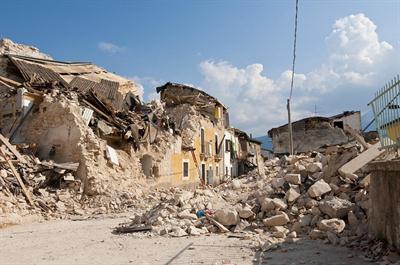PDF chapter test TRY NOW
Earthquake
A sudden jerk or shake of the earth at a place for a short period due to the release of energy that spreads outward in all directions as waves from the source of disturbance is called Earthquake.
The earthquake may be caused by natural and human action. The duration of the Earthquake may be a few seconds to some minutes. It can occur anywhere (land and ocean), but strong earthquakes are most likely to happen near the plate boundaries.

Focus (Hypocenter): A point where the Earthquake originates. It generates a series of elastic waves.
Epicentre: A vertical point at the surface directly above the focus where the impact of the Earthquake is mainly felt.
Epicentre: A vertical point at the surface directly above the focus where the impact of the Earthquake is mainly felt.
The vibrations generated during earthquakes are called seismic waves. Depending on the nature of the medium through which it passes the nature, force and speed of these seismic waves vary.
There are three types of seismic waves:
Primary Waves or P Waves ( avg. speed: 5.3 km kilometres/second to 10.6\ km per second) These are the first waves generated during the earthquake. They are the fastest among the other waves to reach the epicentre. These waves can pass through solid, liquid and gases either through push or pull.
Secondary Waves or S Waves (1\ to 8 kilometres/second): Waves that travel after the primary waves and can pass only through solid. The particle movement in the S-waves is perpendicular to the wave direction (traverse waves). In other words, they shake the ground perpendicular to the direction in which they propagate.
Surface Waves or L Waves (1 to 5 kilometres/second): The Surface waves travel near the ground’s surface at a very slow velocity. These are the most destructive waves. Surface waves are similar to P-waves, but they travel primarily along the ground surface.

Richter scale is to measure the magnitude of Earthquakes. It was designed by C.F. Richter, this scale relates the energy released at the epicentre and provides an estimation of the severity of an Earthquake. It is an open-ended scale. The highest magnitude ever recorded is 9.5 on Richter scale (Bio-Bio, Chile in 1960).
A seismograph or seismometer is an instrument used to record the motion of the ground during an earthquake. A seismogram is the recording of the ground shaking at a specific location. The science
that deals with Earthquakes is called ‘seismology’.
that deals with Earthquakes is called ‘seismology’.
